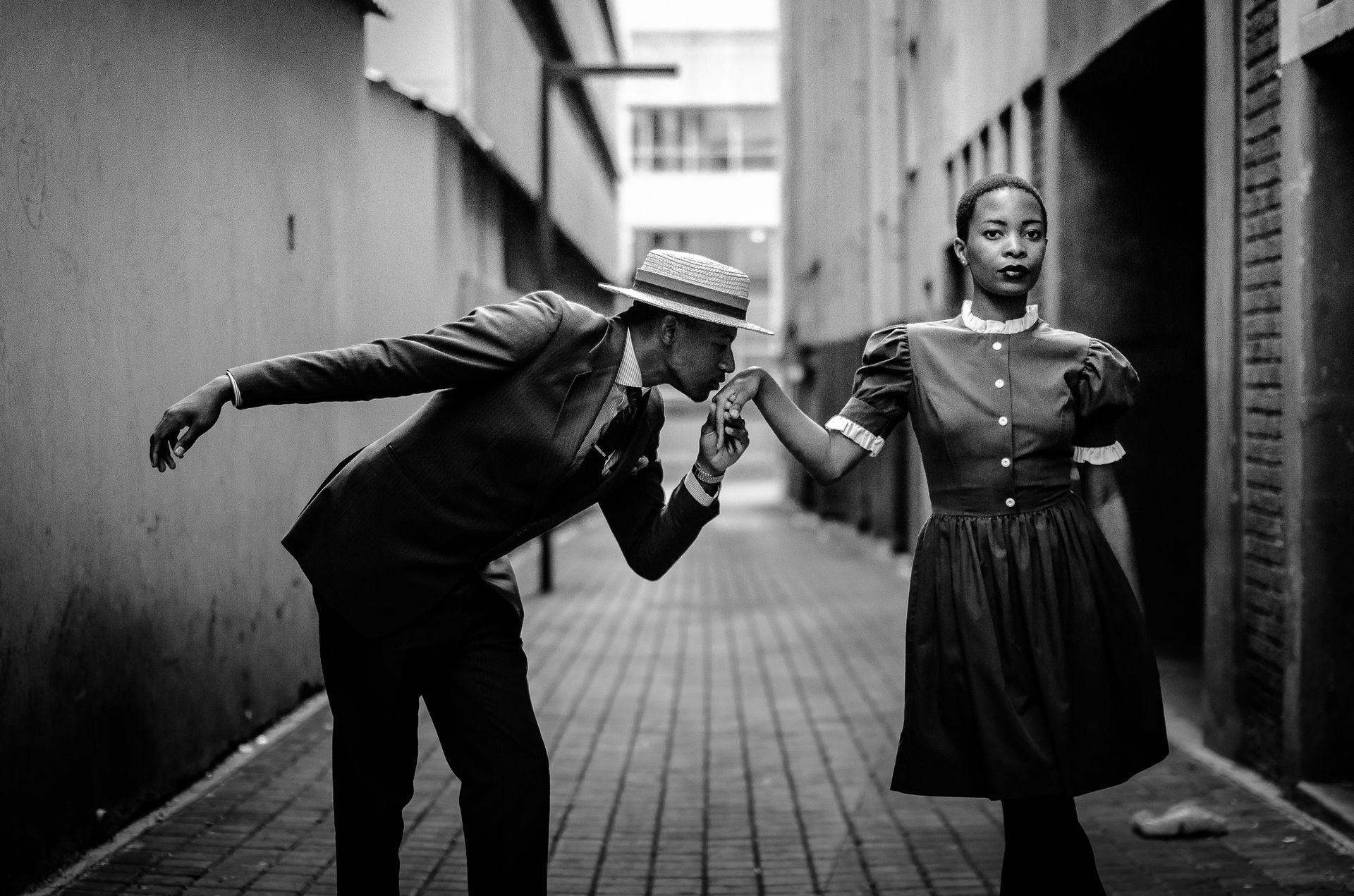For its European premier this autumn, the Dandy Lion project will for the first time include photographs of women dandies in black communities throughout the world. Previous iterations of the acclaimed exhibition in Chicago and San Francisco have focused on black men who spurn “stereotypical and monolithic understandings of black male identity” through fashion and social attitudes—“high-styled rebels”, as the curator Shantrelle P. Lewis describes them.
New to the project are a series of portraits of “Kenya's league of extravagant grannies” with fictional pasts as government and corporate leaders in the 1970s. The Nairobi-based photographer Osborne Macharia depicts these distinguished women stepping off private planes nattily dressed in checked shirts with shorts and braces. One sports a black-and-white polka dot tie and sunglasses to match, a fat cigar held aloft in her right hand. Meanwhile, the South African artist Harness Hamese places women centre stage in his vintage-looking shots; their dandyism pictured alongside that of the men who surround them.

New Orleans-born Lewis says she has been asked many times over the years why her project, begun in 2010, did not include images of women. “Initially I wanted to create a safe space where cis-gender black men—regardless of sexuality—could have a dialogue,” she explains. “But in 2016, with our more sophisticated understandings of gender, one simply can’t discuss masculinity, particularly in the African diaspora, and not include women.”
Part of the Brighton Photo Biennial (1-30 October), the UK iteration of the Dandy Lion project will feature 150 images taken by more than 30 photographers and film-makers over the past decade. As with the women, the male subjects—dressed in audacious and colourful outfits: salmon pink or mint green suits, leopard prints and felt fedoras—have been shot in diverse locations across the US, South Africa, the Congo and Europe.
Lewis says the project began in the autumn of 2010 out of necessity. “Despite the phenomenal economic success of hip hop artists such as Jay-Z and Kanye West, there was a misrepresentation of black men that dominated mainstream media from here to Europe,” she says. “The dominant narrative generally involved some gang-related murder on the nightly news, mass violence erupting in continental African countries, or the modern blackface caricatures and their soap opera-esque dramas on reality television.”
The curator says there is nothing rebellious about the image of today’s “sagging pants wearing youth”, but that the African diasporan dandy “cleverly manipulates clothing and attitude to exert his agency rather than succumb to the limited ideals placed on him by society”.

